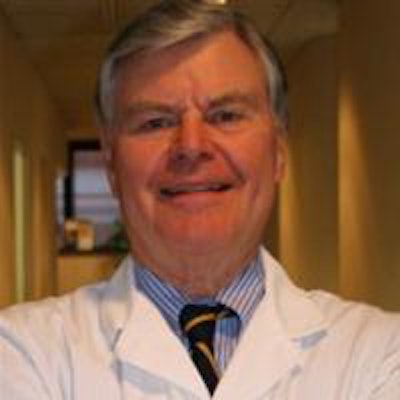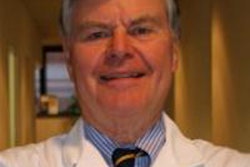
"It is not in the stars to hold our destiny but in ourselves."
— William Shakespeare
Key forces are reshaping the dental landscape. Some pundits claim that the dental profession has arrived at a critical moment in its history. The ADA is urging the profession to "define its destiny." There are many moving parts in attempting to predict what is coming. Here is a view of the future of the dental profession and what I see as some likely consequences, choices, and directions.
The big issues
The elephant in the room is the Patient Protection and Affordable Care Act (ACA), which is causing the healthcare delivery system to change rapidly. Obamacare will have a direct effect on the practice of dentistry, as well as medicine.
 William T. Brown, DDS.
William T. Brown, DDS.The U.S. population is increasing in size and is older and more diverse. Consumer habits are changing with more Americans relying on technology in healthcare decision-making and demanding greater value for their spending.
More dental graduates are being trained, but educational debt load and changing demographics modifies practice choices for new dentists. The average dental graduate debt load is $200,000 and creates a permanent connection to the government. Political pressures are growing to expand dental providers for preventive and restorative procedures; most of these new providers will be nondentists.
A switch from reimbursement provided by employer dental insurance to public aid and personal out-of-pocket payment alters dentist-patient relationships. The percentage of adults visiting the dentist has been dropping since 2006 in all income groups. The prevalence of dental caries in permanent dentition has declined during the last several decades. Pediatric dental care has increased primarily because of government third-party public aid. Predictions are that future generations, especially those with higher incomes, will have fewer decayed teeth and, as a result, fewer complex dental restorative needs.
With more people keeping their natural teeth and living longer, there may be increased need for preventive, geriatric, and periodontal care. Some advocates for these preventive services predict that instead of dentists providing the care, it will be relegated to hygienists and midlevel dental therapists.
According to the May 2013 ADA-sponsored Diringer report, "Critical Trends Affecting the Future of Dentistry: Assessing the Shifting Landscape," Americans no longer want to be viewed as "patients"; instead they want to be viewed as "consumers." The switch implies differing behaviors and expectations.
Can dentistry be independent?
Some pundits are predicting the end of private care dentistry within eight years. Will this come to pass because of external forces, or is the dental profession asleep at the switch and/or reactionary -- or a combination of both?
Will there be partisan bickering within dentistry? Like, Drudge versus Huffington, Fox versus MSNBC, Dems versus GOP? Will that behavior result in paralysis of the profession instead of moving forward to do what is best for the public we serve?
Will the practice of the future be based on a business model, or will dentistry honor our contract with society and be a profession? Will the surgical archetype of practice continue to place dentistry in the realm of commodity transactions rather than treating patients as total human beings? Will dentistry treat the mouth as an organ system and a medical specialty, or will it continue to separate the oral cavity from the rest of the body?
Reading the ADA report and other future-focused publications could be taken as a depressing unrivaled disaster. Or, it could be considered challenging, offering great opportunities.
I prefer to think in terms of the latter.
What could happen?
Dentistry has made amazing advances in the five decades I've been in practice. We have determined the scientific cause and prevention of man's most common disease. The result of our aim to put ourselves out of business has been a significant reduction in the incidence and severity of dental caries.
The use of root canal therapy and early detection and control of periodontal disease have made the goal of preserving natural teeth for a lifetime a reality. Public health measures, including fluoridated water and education in oral-physiotherapy, have made significant inroads by lowering the incidence of dental disease.
"Ignore your teeth and they will go away"
The above slogan was developed by PR-3 (Iowa, Minnesota, and North Dakota Dental Associations) in the 1970s, and is an example of effective and successful public education. The message embodied in public service announcements sponsored by dentists appeared on radio and TV, bus sides, billboards. It successfully communicated the message that patients were accountable and responsible for their oral health and that dentures were an inadequate substitute for natural teeth. The message, Preserve Your Natural Resources, has as much strength and capacity to convey an important public health lesson today as it did then. It is evidence that taking dentistry's convincing message to the public can be a force that results in change to the benefit of everyone.
Yes, there is a segment of the population that is underserved. But is that completely the fault of the dental profession? I think there is enough blame to go around. Why hasn't there been a nationwide initiative to stop dental disease? Why don't dentists live where people need them? There are major programs to stamp out smoking and obesity. "Fasten your seat belt: It's the law" is posted on most major highways.
Where are the educational programs for the public to change their behavior with a proven, safe, easy, and economical way to prevent dental disease?
The underserved population can least afford repairs. The control of disease should be the primary public health goal of the elaborate community health centers. Instead, they basically follow the same surgical model of finding and fixing the ravages of disease.
In addition, the provider reimbursement should be at least break even so private dentists aren't penalized economically for treating public aid patients. Private practice dentists would certainly be more cost-effective than community health centers. And, the need for establishment and training of an entirely new independent healthcare provider with enormous cost to taxpayers could be eliminated. Adequate reimbursement would improve the misdistribution of dentists from urban to rural areas.
Back to the future
What elements of dental practice will ensure a solid foundation and continued professionalism for the public good?
Create the decathlon dentist. The U.S. dental schools are capable of producing highly qualified dentists in four years. In my view, the failure of dental education is the inability to produce skills for the dental workforce that matches the needs of graduates. It would be useful to arm new dentists with training in people skills, the art of participative management, and human relations abilities. Dentists must be fully prepared to meet the challenges in the 21st century practice setting. Techniques are important, but biotechnical capabilities alone won't make new graduates capable of dealing with the myriad of challenges facing them.
Establish dentist-patient relationships. The seminal quote by Dr. Nathan Kohn Jr. should be the maxim for every dentist:
When a patient leaves your office able to explain to his friends his relationship with you and how it benefits him, immediately and in the years ahead, you have established a relationship with the patient which is the only sound basis for growth of your practice and development of your profession.
Establishing the dentist-patient relationship is more important in the 21st century than it has ever been. In my view, the relationship-based practice can be the savior of the dental profession in the Internet world where it is possible to deal without ever interacting with another human.
- Diagnosis should be the most important service provided. Instead of "free exams and x-rays" to attract patients, dentists should provide a diagnosis based on comprehensive oral examinations as their most important service. Diagnosis is the fundamental reason for a professional education.
Develop dental metrics. The future of dental practice will be driven by outcomes instead of reimbursement by procedure. For the dentist to measure outcomes, it will be necessary to have dental metrics that establish baseline data and digitally quantify patient progress. How will these metrics be developed and implemented?
Early detection and prevention are key. Can we picture a world where dentists are the entry point in the healthcare system?
What scientific/technologic advances may be standard practice in the near term? The establishment of the oral-systemic relationship between periodontal disease and cardiovascular disease, diabetes, and preterm and low birth weight babies; and the use of salivary diagnosis for a wide range of proteins, nucleic acids, hormones, pharmaceuticals; and pathogens measured in the saliva. This technology could open the door to rapid detection and screening of biomarkers for dental caries, periodontal disease, osteoporosis, infectious diseases, and cancer in the dental office. For example, researchers at the University of California, Los Angeles (UCLA) are on the path to creating noninvasive diagnostic tool for pancreatic cancer. Instead of the present invasive and complex biopsy process, UCLA researchers have discovered evidence for using saliva as simple risk assessment tool for pancreatic cancer.
I believe dentists of the future will be trained to recognize, diagnose, and refer many common systemic disorders, thereby working closely with their medical colleagues for early detection and intervention of a host of diseases.
The big difference
Dental disease is predictable. If practical, effective and inexpensive habits are coupled with routine professional dental care, natural teeth can be maintained for life, and incidence of dental repair can be lowered. By contrast, ending tobacco use, regular exercise, proper diet, etc. doesn't necessarily prevent cancer, diabetes, or cardiovascular disease. Why should dentistry follow the footsteps of a failing medical model? Preventive measures versus the surgical model. Sick care instead of healthcare.
In the medical model, gone are the solo practices and it is difficult to see a real doctor. Is the independent practicing dental therapist a peek into dentistry's future?
The bottom line
What are the basic components necessary to encounter the challenges the profession is confronted with?
- Public and dental office education of the cause and effective control of dental disease
- Making dental education affordable so graduates won't be saddled with unwieldy debt and permanent connection to government
- Legislation to ensure at least, break-even reimbursement to private dentists for care of the underserved
- A clearly defined philosophy of practice that is easily understood and repeatable, based upon the dentist's self-awareness
- Establishment of dentist-patient relationships
- Diagnosis as the most the important service, coupled with prevention
- Comprehensive oral examination that records all changes from NORMAL
- Dental metrics to establish baseline data and quantify patient progress
- Treatment plans that emphasize preventive measures, unmanageable areas made manageable, informed prognosis, staging treatment on the patient's terms, and outcomes
- Establishment of oral health savings accounts for patients to pay for necessary treatment
- A credo and tenet of practice that is focused on the patient first
The brave new world
Careful thought on personal and professional management aiming to meet the future challenges might include the following:
Understanding your self-concept. What are your beliefs? What are your values? What are your blind spots, your biases? What are your strengths? Are you sensitive to needs of others?
The dentist and patient must agree on their goals for oral health. It must be by agreement, not by acquiescence.
The future of dentistry can be as bright as the profession can collectively define and implement it.
"The future of dentistry is with those people who gain the ability to clarify their own values, focus upon their preferred futures and develop humanistic management capacities."
— Robert Barkley, DDS, 1977
William T. Brown, DDS, practices in Des Moines, IA, and writes a monthly blog, Dental Intelligence, to share information and experiences that have fundamentally changed the way dentistry is practiced.
The comments and observations expressed herein do not necessarily reflect the opinions of DrBicuspid.com, nor should they be construed as an endorsement or admonishment of any particular vendor, analyst, industry consultant, or consulting group.



















